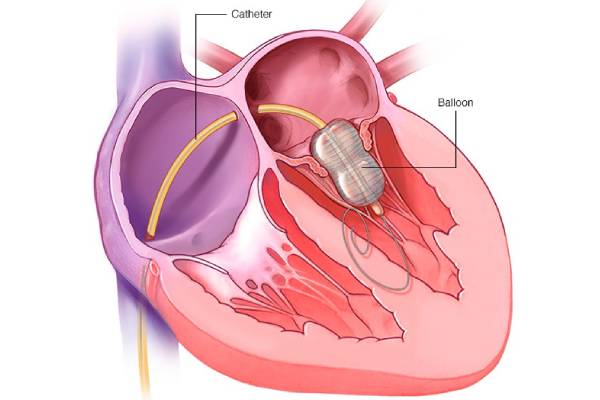How do heart valves work?
Blood passes through a valve before leaving each chamber of the heart. There are four valves within your heart. The heart valves make sure blood flows in only one direction through your heart.
The mitral valve is located between the left upper and lower chambers of the heart. It has two leaflets that open and close similar to a double door.
What is mitral stenosis?
Stenosis means narrowing of an opening, such as a heart valve. Stenosis of the mitral valve limits the forward flow of blood from the left atrium to the left ventricle. This may cause a back-up of blood and fluid in the lungs.
Mitral stenosis most commonly develops many years after a person has had rheumatic fever, although many patients diagnosed with mitral stenosis don’t recall ever having the illness.

What are the symptoms?
Many of the symptoms of mitral stenosis, such as shortness of breath and fatigue, result from a back-up of blood in the lungs. Other symptoms of mitral stenosis may include quick weight gain; weakness; dizziness; swelling in the ankles, feet and/or abdomen (edema); and/or heart palpitations (irregular heartbeat).
What causes mitral stenosis?
Mitral stenosis most commonly develops many years after a person has had rheumatic fever, although many patients diagnosed with mitral stenosis don’t recall ever having the illness. During rheumatic fever, the valve becomes inflamed. Over time, the leaflets of the inflamed valve stick together and become scarred, rigid and thickened, limiting its ability to open completely.
How is mitral valve stenosis treated?
Valve stenosis can sometimes be treated with medications if the symptoms are mild. When medications do not work to control symptoms, balloon valvotomy or surgical valve repair or replacement is performed.
Balloon valvotomy successfully opens the narrowed valve and improves the overall function of the heart. If balloon valvotomy cannot be performed, surgical valve repair or replacement may be options. Valve repair may be performed to separate fused valve leaflets, sew torn leaflets or reshape parts of the valve.

 WhatsApp us
WhatsApp us